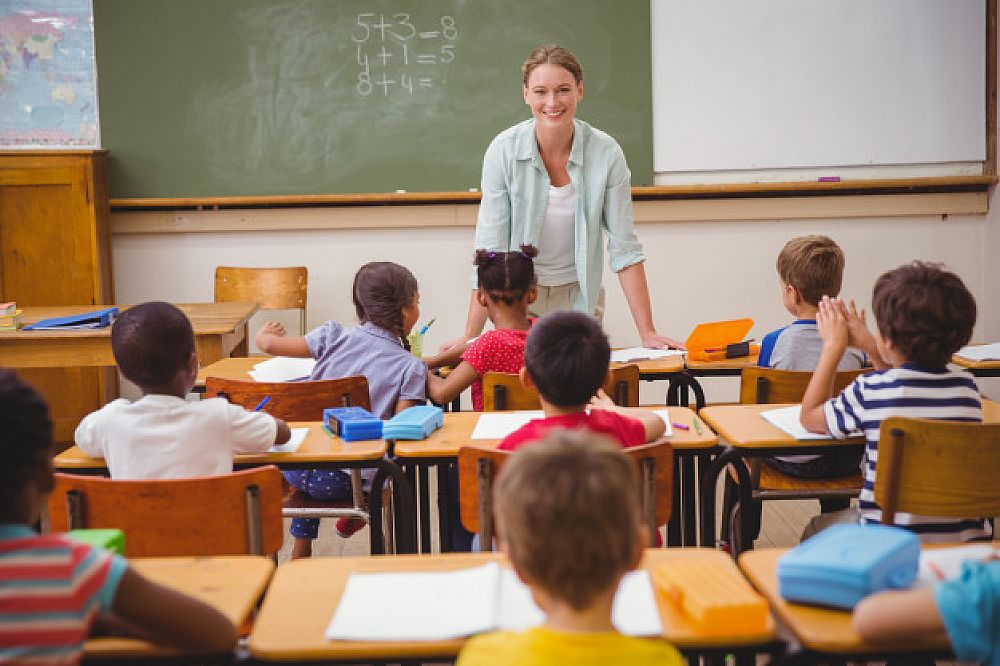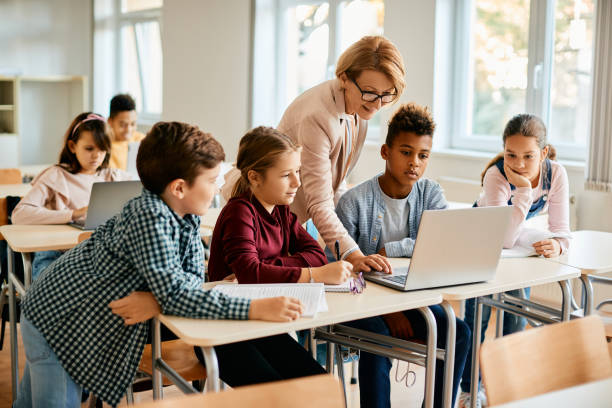Comprehensive Primary Science Tuition Singapore for Primary School Students
Comprehensive Primary Science Tuition Singapore for Primary School Students
Blog Article
A Comprehensive Overview to the Different Knowing Techniques in Primary Science Guideline
The exploration of diverse understanding approaches in primary science instruction offers a chance for instructors to boost pupil engagement and comprehension significantly. By taking a look at hands-on learning techniques, inquiry-based approaches, and joint techniques, we can identify efficient practices that accommodate different learning designs. Furthermore, the assimilation of modern technology and separated instruction plays a crucial duty in fostering a comprehensive environment. Nevertheless, the inquiry remains: just how can these methods be successfully implemented in the classroom to optimize their influence? The answer hinges on a more detailed evaluation of each method and its ramifications for training scientific research.

Hands-On Knowing Strategies
Hands-on understanding techniques play an essential role in primary science instruction, involving pupils in energetic expedition and experimentation. These techniques allow learners to connect straight with phenomena and materials, cultivating a deeper understanding of scientific concepts. By utilizing manipulatives, versions, and real-life experiments, instructors develop a setting where students can observe, hypothesize, and evaluate their ideas.
Such strategies not only improve understanding however additionally grow critical thinking and analytical skills. When students take part in activities like building simple equipments, growing seeds, or carrying out chain reactions, they are encouraged to ask inquiries and look for responses through their very own observations. This experiential method helps to debunk complicated scientific concepts, making them a lot more relatable and obtainable.
In addition, hands-on discovering promotes cooperation among peers, as pupils commonly work in teams to carry out experiments or share findings. This team effort not only enhances their knowing experience yet likewise creates necessary social skills. Inevitably, integrating hands-on methods in primary science guideline promotes a long-lasting love of knowing and inquisitiveness about the all-natural world, laying a strong structure for future academic searches in science and beyond.
Inquiry-Based Learning
Inquiry-based knowing is an educational method that motivates pupils to ask questions, explore phenomena, and create their very own understanding of scientific ideas. This method moves the emphasis from conventional teacher-led guideline to a more student-centered experience, where students take the campaign in their educational journey. By cultivating curiosity, inquiry-based discovering advertises deeper interaction with the product, permitting students to check out subjects in a meaningful context.
In method, this approach typically entails hands-on experiments, observations, and essential thinking activities that straighten very closely with the scientific approach. Trainees are encouraged to formulate theories, layout examinations, and assess information, which grows important skills such as logical and problem-solving thinking. The function of the teacher in this framework is to facilitate expedition, leading students with the questions procedure while urging independent idea and collaboration.
Moreover, inquiry-based learning supports a feeling of ownership over the discovering process, encouraging pupils to go after understanding actively. This approach not just enhances understanding of scientific principles however also fosters a long-lasting love for discovering, furnishing students with the abilities needed to navigate a progressively complex globe.
Collaborative Discovering Approaches
Collaborative discovering approaches equip students to engage in purposeful interactions with peers, cultivating a shared obligation for their instructional outcomes. In main scientific research instruction, these techniques urge learners to work with each other to explore clinical concepts, address problems, and perform experiments (primary science tuition Singapore). By taking part in group tasks, pupils can leverage varied point of views, enabling richer understanding and retention of scientific understanding
One trick facet of collaborative learning is the focus on communication abilities. Pupils should verbalize their ideas, listen proactively to others, and bargain concepts, every one of which are important competencies in both real-world and academic contexts. This social communication not just boosts their understanding of scientific principles yet additionally advertises teamwork and conflict resolution abilities.
In addition, collaborative learning frequently causes boosted inspiration and engagement. When students see the worth of their payments within a team, they are more probable to take possession of their understanding trip. Teachers can facilitate this process deliberately organized team tasks that align with educational program objectives while offering guidance on reliable partnership methods. In general, incorporating joint discovering methods in primary science guideline cultivates a vibrant discovering atmosphere that prepares students for future scholastic and social difficulties.
Innovation Assimilation in Science
The combination of innovation in key scientific research instruction enhances learning experiences by supplying cutting-edge devices and resources that support different mentor techniques, consisting of collaborative knowing - primary science tuition Singapore. Making use of electronic systems, simulations, and interactive applications permits students to engage deeply with clinical ideas, helping with a much more hands-on approach to knowing
Online research laboratories, as an example, enable learners to conduct experiments safely and efficiently, promoting inquiry-based learning. These devices can imitate real-world clinical circumstances, permitting pupils to envision intricate procedures that would certainly be hard to reproduce in a traditional classroom setup. Modern technology cultivates interaction and cooperation amongst pupils, as they can share searchings for and work together on projects via on-line systems.
Furthermore, multimedia presentations and educational videos can enrich lessons by dealing with read this post here varied knowing styles, making abstract principles a lot more obtainable. Information evaluation devices likewise empower students to accumulate and analyze clinical data, strengthening essential thinking abilities. On the whole, the strategic unification of modern technology in key science direction not only boosts involvement but additionally prepares trainees for a technically sophisticated culture, furnishing them with necessary skills for future clinical ventures.
Distinguished Guideline Methods
Differentiated guideline methods are necessary for attending to the diverse demands of learners in main science education and learning. These strategies make it possible for teachers to customize their training approaches to accommodate differing capacities, interests, and check my source discovering designs within the classroom. By using distinguished guideline, instructors can develop an inclusive atmosphere that cultivates engagement and improves understanding of scientific ideas.
One reliable strategy is to utilize adaptable organizing, which allows trainees to team up with peers at comparable skill levels or with differing viewpoints. This approach urges peer discovering and advertises essential reasoning. In addition, using choices in jobs can empower students, enabling them to pick tasks that reverberate with their rate of interests while still satisfying curricular objectives.
Moreover, including tiered jobs is one more important technique. Deliberately jobs with differing degrees of intricacy, educators can ensure that all pupils are properly challenged, despite their efficiency. Utilizing developmental evaluations to gauge recognizing additional enables educators to change their educational techniques dynamically, ensuring that each student receives the assistance they need.
Ultimately, carrying out distinguished guideline techniques in primary scientific research education and learning not only boosts trainee learning results but likewise grows a passion for scientific research, preparing students for future scholastic searches.

Conclusion
In summary, efficient main scientific research guideline necessitates a diverse technique that incorporates hands-on understanding, inquiry-based methods, and collaborative methods. The combination of modern technology and differentiated instruction even more caters to diverse discovering styles, promoting an atmosphere favorable to expedition and critical thinking.
The exploration of varied learning approaches in key scientific research guideline offers a chance for teachers to improve student engagement and comprehension considerably.Hands-on learning techniques play a pivotal role in key scientific research direction, engaging students in energetic expedition and testing.Inquiry-based learning is an instructional strategy that motivates students to ask questions, explore sensations, and build their own understanding of scientific concepts.Joint understanding techniques equip students to involve in significant interactions with peers, cultivating a shared responsibility for their instructional results. Overall, including collective my latest blog post learning strategies in primary science direction grows a vibrant understanding environment that prepares students for future scholastic and social obstacles.
Report this page